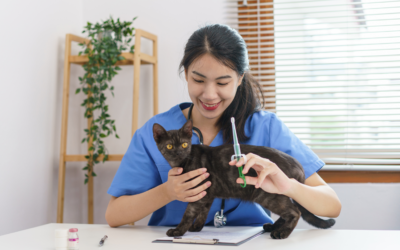While cats are often known for their independence and calm demeanor, some cats may exhibit aggressive behavior towards their owners or other pets. Cat aggression can be a serious problem that can put both the cat and their owners in danger. In this blog post, we’ll explore some of the common causes of aggression in cats and provide some solutions for how to address it.
Causes of Aggression in Cats
Fear or anxiety, such as feeling threatened by another animal or person: Cats may become aggressive when they feel threatened or afraid. This can happen when they are introduced to a new person or pet, or when they encounter a perceived threat.
Territorial behavior, especially towards other cats: Cats are territorial animals, and may become aggressive when they feel that their territory is being threatened. This can happen when a new cat is introduced into the household or when a cat encounters another cat in their outdoor territory.
Pain or illness, which can cause a normally calm cat to act out: Cats in pain or discomfort may become aggressive as a means of protecting themselves.
Play aggression, which can be mistaken for true aggression: Play aggression is a normal behavior in cats, but can be mistaken for true aggression. Play aggression typically involves swatting, biting, or wrestling with their owner’s hands or feet.
Lack of socialization or inadequate training: Cats that are not properly socialized or trained may develop aggressive behaviors as they are not accustomed to being around people or other pets.
Solutions for Aggression in Cats
Identifying and addressing the root cause of the aggression: Identifying the cause of the aggression is crucial in developing an effective treatment plan. Once the cause is identified, the owner can take steps to address the root cause of the aggression.
Providing appropriate outlets for play and exercise: Providing cats with appropriate outlets for play and exercise can help reduce aggression. This can include providing toys, scratching posts, and playtime with the owner.
Creating a safe and comfortable environment for the cat: Creating a safe and comfortable environment for the cat can help reduce stress and anxiety, which can contribute to aggressive behavior. This can include providing a cozy bed, access to food and water, and litter boxes in appropriate locations.
Consulting with a veterinarian, who may recommend medication or behavioral therapy: In some cases, medication or behavioral therapy may be necessary to help the cat overcome their aggressive behavior. A veterinarian can provide guidance and prescribe medication if needed.
Enlisting the help of a professional animal behaviorist: In severe cases of aggression, a professional animal behaviorist may be needed to help the cat overcome their aggressive behavior.




